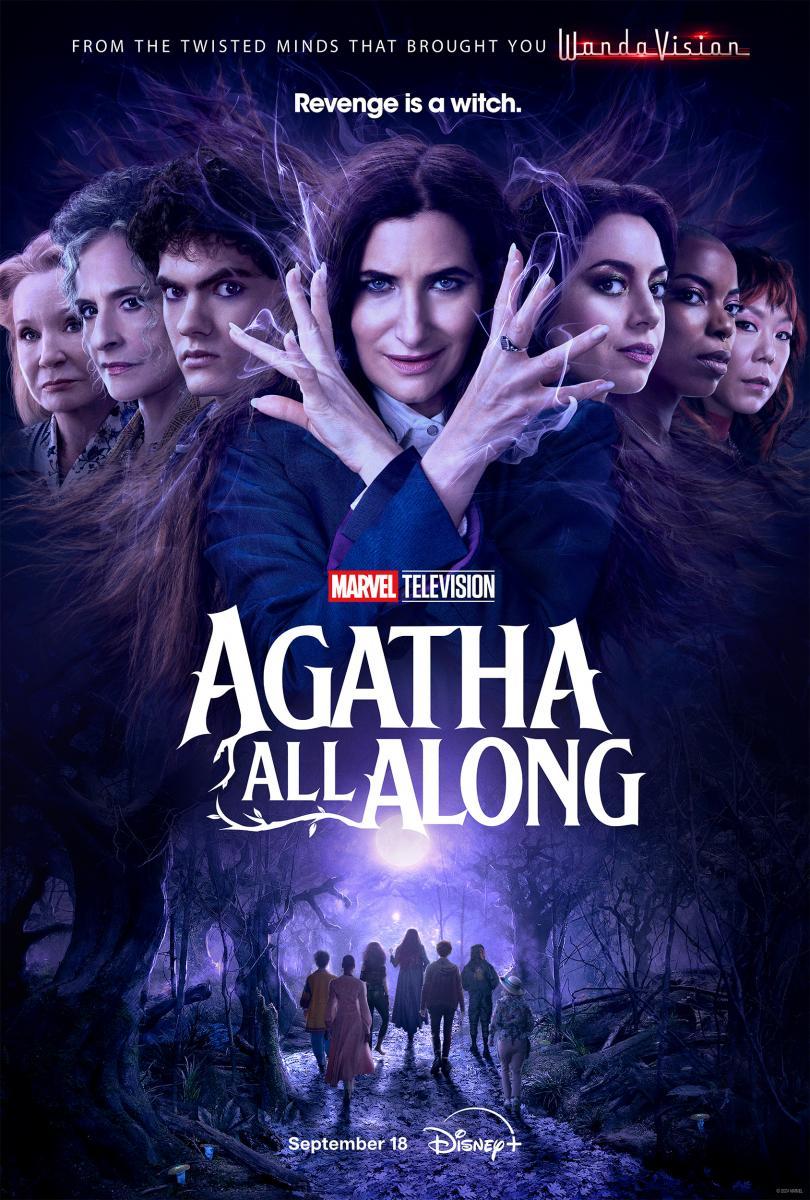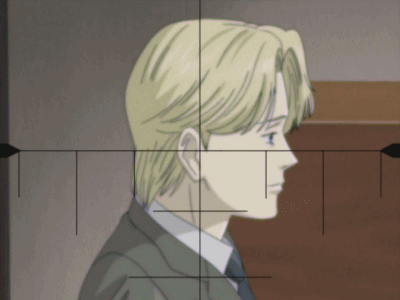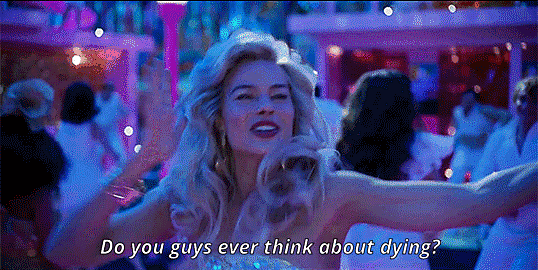Over four seasons, the Netflix series has hollowed out along with the streaming industry that spawned it.
ABBC3_SPOILER_SHOW
How long can Emily possibly stay in Paris? The Netflix series in question débuted way back in October of 2020, in the benighted early days of the pandemic, when it seemed possible that nothing would ever be normal again. Here was a shining beacon of banality, a streaming series that didn’t even attempt to challenge viewers, instead bathing us in comfort as Emily jogged through the City of Light, became a successful influencer, and remained tackily American in the face of French decadence. We couldn’t leave our houses, but Emily, played by Lily Collins, was our tourist avatar. At the time, I dubbed the series “ambient television,” a multimedia production designed to function as background while you looked at your phone. Emily’s recently released fourth season is much the same, but more so—that is, it’s worse, in ways that reflect the hollowing out of the streaming industry that spawned it. A show about the protagonist’s career at a luxury-marketing agency has become luxury marketing; scarcely an episode goes by without multiple product placements. The characters are mere containers for their monetizable personal brands, both within the show’s narrative and outside of it. (This month, Netflix launched an “Emily in Paris” video game.) Paris, too, is a shadow of itself, appearing onscreen via a small number of repeating sets as thin as theatre façades.
Four years have gone by in real life since the beginning of the show. After a careful rewatch, I have surmised that somewhere between one and two years have passed in the world of the show. Emily’s American boss discovered that she was pregnant in the first-ever episode and had her baby early in Season 3, suggesting that some nine months had passed in the interim. Marketing campaigns and fashion seasons have come and gone since, yet the weather has barely varied from monotonous sunshine, as if Paris had the climate of Los Angeles. Season 3 includes Paris’s summer-solstice party, La Fête de la Musique, on June 21st. But Season 4 kicks off with the French Open, which happens at the end of May. Has time at some point reversed course? Among the only indicators of forward progress is that the social media the characters use—to spread gossip or promote a new dessert—is now faux-TikTok rather than faux-Instagram.
Emily remains in limbo. Her French is still terrible, despite the fact that she spends most of her time with French people. She’s still romantically entangled with the same chef-neighbor, Gabriel, whose pregnant ex, the gallerist Camille, becomes a neighbor, too. Emily seems to have made only one faithful friend on her own, Mindy, a fellow-expat whose busking band is now representing France in the Eurovision Song Contest. This season, Emily briefly dabbles in being single for about a day, observing all the hot guys in Paris, but then in the course of one episode succumbs to being Gabriel’s girlfriend, perching late at night at his restaurant’s bar waiting for him to finish work. All of Emily’s life events are expressed through marketing stunts. The climactic breakup of her relationship with her sometime boyfriend, the British expat Alfie, occurs as the couple are forced to kiss for an onscreen advertisement during the French Open for the (real) fashion brand Ami Paris. Their subsequent heartbreak then provides the logic behind a masquerade ball for a perfume launch. Romance, like so much of Emily’s life, is simply a means for the production of content.
Behind Emily’s wide, toothy grin and brightly popping eyes is a well of pain, only hinted at by the tautness of her features. Emily is incapable of self-fulfillment, because, unbeknownst to her, she is a victim of the perverse industrial incentives acting upon her creators. In November of 2022, Netflix launched a cheaper subscription tier with advertising, marking a return to something like the old-school cable model. In markets where the ad subscription is available, forty per cent of new subscribers have chosen it, and with the success of the approach has come an attendant shift in strategy. The company’s goal is not just to spark viewers’ interest with original programming but to sustain their attention so that they will view more ads. This puts Netflix one step closer to digital platforms such as Instagram and TikTok, which run on the sheer volume of content, regardless of its quality. Thus, Netflix’s offerings seem to become ever-more repetitive: Franchises such as “Bridgerton” fade into mediocre seasons and launch spinoffs; reality series including “Love Is Blind” and “Selling Sunset” are reiterated in different locales. If the content isn’t repetitive, it’s at least familiar: in recent years, Netflix added HBO’s “Sex and the City,” created by Darren Star, who also made “Emily in Paris,” and NBCUniversal’s long-running series “Suits,” absorbing the content of its competitors. Ultimately, the strategy seems to have paid off. In the summer of 2023, Netflix’s stock took a dive after the company announced lacklustre subscriber growth, a consequence of the pandemic boom finally fading. But it has since recovered, and a narrative has prevailed that Netflix “won” the streaming wars, with more subscribers than any of its competitors.
Still, no show charts the streaming industry’s decline in inspiration quite like “Emily in Paris,” or the rush to capture the maximum amount of attention with the minimum investment of capital. Since the beginning, “Emily in Paris” has shown off luxury fashion by way of the main character’s increasingly discordant outfits, but in recent seasons the paid-for presence of specific brands has become overwhelming. In the first episode of Season 4 alone, there are prominent features of the Samsung Galaxy Z Flip phone, a smartphone that folds in half that everyone in Paris suddenly seems to have even though the locals disdain technology; Staub, the cookware brand; Vestiaire Collective, a clothing-resale platform; and Zepeto, an utterly random app to produce three-dimensional avatars, which Emily hopes to use to fake Alfie’s participation in the French Open stunt. None of these are persuasive additions to the plot; they stick out like American athleisure in Paris. One major plot point involves Baccarat, the real crystal brand, which collaborates with the fictional Maison Lavaux perfumer. Offscreen, Baccarat even released a real-life version of the perfume bottle designed in the show’s story line, priced at nearly five hundred dollars.
As if to acknowledge the show’s diminished quality, Netflix is releasing Season 4 in two batches of five episodes, perhaps hoping to milk some extra novelty out of two premières and cliffhangers. Yet cutting “Emily in Paris” in half is like producing a low-nicotine cigarette or potato chips with half the usual salt. Bingeability is the show’s whole raison d’être, as Emily’s colleagues might say. The stakes in Emily’s life have always been low. What made it so easy to watch was the ambience, whether the characters were sitting at a Parisian café table or throwing a party in a Provençale bastide. The new season provides a few enjoyable flashes of local French flavor, as when Gabriel brings Emily to an after-hours chef hangout at a closed restaurant, gossiping about Michelin stars and playing drinking games, or when she and Camille have a fight at Giverny, Monet’s garden, where they eventually tumble into the picturesque pond that hosts the painter’s famous water lilies. Luc, Emily’s surreally goofy French co-worker, remains delightful (he is revealed to live in a houseboat on the Seine), as does her unsentimental boss, Sylvie. But the rest of the new season is a saccharine slog, down to a halfhearted luxury-fashion #MeToo subplot. Even Camille’s dramatic pregnancy ends up a false positive.
The initial promise of “Emily in Paris” was entertainment as audiovisual cotton candy. With each passing season, the creeping incoherence becomes harder to ignore, breaking the show’s addictive spell. At the masquerade ball for Baccarat, Emily dresses up in a nightmarish bodysuit with thick black-and-white vertical stripes, plus a huge-brimmed black hat and a Venetian mask around her eyes. The outfit’s appearance onscreen is a jump scare; Emily looks like the Hamburglar. And yet one of the Baccarat representatives arrives wearing the exact same bizarre outfit. The two stare at each other, mirror images. Emily is amused by the coincidence, but in a deeper way she is confronting her own replicability, the existential illusion of selfhood. If everyone is the main character, then no one is. At the end of the ball, Alfie mistakenly kisses Emily’s twin in an attempt to win her back. When he realizes his mistake, he laughs bitterly and stomps offscreen, then disappears for the remaining episodes. The teaser for the second batch of episodes hints at a trip to Rome. Perhaps the writers have got tired of Paris, too. ♦
Four years have gone by in real life since the beginning of the show. After a careful rewatch, I have surmised that somewhere between one and two years have passed in the world of the show. Emily’s American boss discovered that she was pregnant in the first-ever episode and had her baby early in Season 3, suggesting that some nine months had passed in the interim. Marketing campaigns and fashion seasons have come and gone since, yet the weather has barely varied from monotonous sunshine, as if Paris had the climate of Los Angeles. Season 3 includes Paris’s summer-solstice party, La Fête de la Musique, on June 21st. But Season 4 kicks off with the French Open, which happens at the end of May. Has time at some point reversed course? Among the only indicators of forward progress is that the social media the characters use—to spread gossip or promote a new dessert—is now faux-TikTok rather than faux-Instagram.
Emily remains in limbo. Her French is still terrible, despite the fact that she spends most of her time with French people. She’s still romantically entangled with the same chef-neighbor, Gabriel, whose pregnant ex, the gallerist Camille, becomes a neighbor, too. Emily seems to have made only one faithful friend on her own, Mindy, a fellow-expat whose busking band is now representing France in the Eurovision Song Contest. This season, Emily briefly dabbles in being single for about a day, observing all the hot guys in Paris, but then in the course of one episode succumbs to being Gabriel’s girlfriend, perching late at night at his restaurant’s bar waiting for him to finish work. All of Emily’s life events are expressed through marketing stunts. The climactic breakup of her relationship with her sometime boyfriend, the British expat Alfie, occurs as the couple are forced to kiss for an onscreen advertisement during the French Open for the (real) fashion brand Ami Paris. Their subsequent heartbreak then provides the logic behind a masquerade ball for a perfume launch. Romance, like so much of Emily’s life, is simply a means for the production of content.
Behind Emily’s wide, toothy grin and brightly popping eyes is a well of pain, only hinted at by the tautness of her features. Emily is incapable of self-fulfillment, because, unbeknownst to her, she is a victim of the perverse industrial incentives acting upon her creators. In November of 2022, Netflix launched a cheaper subscription tier with advertising, marking a return to something like the old-school cable model. In markets where the ad subscription is available, forty per cent of new subscribers have chosen it, and with the success of the approach has come an attendant shift in strategy. The company’s goal is not just to spark viewers’ interest with original programming but to sustain their attention so that they will view more ads. This puts Netflix one step closer to digital platforms such as Instagram and TikTok, which run on the sheer volume of content, regardless of its quality. Thus, Netflix’s offerings seem to become ever-more repetitive: Franchises such as “Bridgerton” fade into mediocre seasons and launch spinoffs; reality series including “Love Is Blind” and “Selling Sunset” are reiterated in different locales. If the content isn’t repetitive, it’s at least familiar: in recent years, Netflix added HBO’s “Sex and the City,” created by Darren Star, who also made “Emily in Paris,” and NBCUniversal’s long-running series “Suits,” absorbing the content of its competitors. Ultimately, the strategy seems to have paid off. In the summer of 2023, Netflix’s stock took a dive after the company announced lacklustre subscriber growth, a consequence of the pandemic boom finally fading. But it has since recovered, and a narrative has prevailed that Netflix “won” the streaming wars, with more subscribers than any of its competitors.
Still, no show charts the streaming industry’s decline in inspiration quite like “Emily in Paris,” or the rush to capture the maximum amount of attention with the minimum investment of capital. Since the beginning, “Emily in Paris” has shown off luxury fashion by way of the main character’s increasingly discordant outfits, but in recent seasons the paid-for presence of specific brands has become overwhelming. In the first episode of Season 4 alone, there are prominent features of the Samsung Galaxy Z Flip phone, a smartphone that folds in half that everyone in Paris suddenly seems to have even though the locals disdain technology; Staub, the cookware brand; Vestiaire Collective, a clothing-resale platform; and Zepeto, an utterly random app to produce three-dimensional avatars, which Emily hopes to use to fake Alfie’s participation in the French Open stunt. None of these are persuasive additions to the plot; they stick out like American athleisure in Paris. One major plot point involves Baccarat, the real crystal brand, which collaborates with the fictional Maison Lavaux perfumer. Offscreen, Baccarat even released a real-life version of the perfume bottle designed in the show’s story line, priced at nearly five hundred dollars.
As if to acknowledge the show’s diminished quality, Netflix is releasing Season 4 in two batches of five episodes, perhaps hoping to milk some extra novelty out of two premières and cliffhangers. Yet cutting “Emily in Paris” in half is like producing a low-nicotine cigarette or potato chips with half the usual salt. Bingeability is the show’s whole raison d’être, as Emily’s colleagues might say. The stakes in Emily’s life have always been low. What made it so easy to watch was the ambience, whether the characters were sitting at a Parisian café table or throwing a party in a Provençale bastide. The new season provides a few enjoyable flashes of local French flavor, as when Gabriel brings Emily to an after-hours chef hangout at a closed restaurant, gossiping about Michelin stars and playing drinking games, or when she and Camille have a fight at Giverny, Monet’s garden, where they eventually tumble into the picturesque pond that hosts the painter’s famous water lilies. Luc, Emily’s surreally goofy French co-worker, remains delightful (he is revealed to live in a houseboat on the Seine), as does her unsentimental boss, Sylvie. But the rest of the new season is a saccharine slog, down to a halfhearted luxury-fashion #MeToo subplot. Even Camille’s dramatic pregnancy ends up a false positive.
The initial promise of “Emily in Paris” was entertainment as audiovisual cotton candy. With each passing season, the creeping incoherence becomes harder to ignore, breaking the show’s addictive spell. At the masquerade ball for Baccarat, Emily dresses up in a nightmarish bodysuit with thick black-and-white vertical stripes, plus a huge-brimmed black hat and a Venetian mask around her eyes. The outfit’s appearance onscreen is a jump scare; Emily looks like the Hamburglar. And yet one of the Baccarat representatives arrives wearing the exact same bizarre outfit. The two stare at each other, mirror images. Emily is amused by the coincidence, but in a deeper way she is confronting her own replicability, the existential illusion of selfhood. If everyone is the main character, then no one is. At the end of the ball, Alfie mistakenly kisses Emily’s twin in an attempt to win her back. When he realizes his mistake, he laughs bitterly and stomps offscreen, then disappears for the remaining episodes. The teaser for the second batch of episodes hints at a trip to Rome. Perhaps the writers have got tired of Paris, too. ♦
















